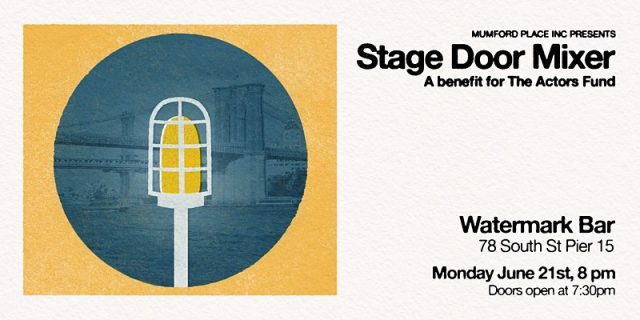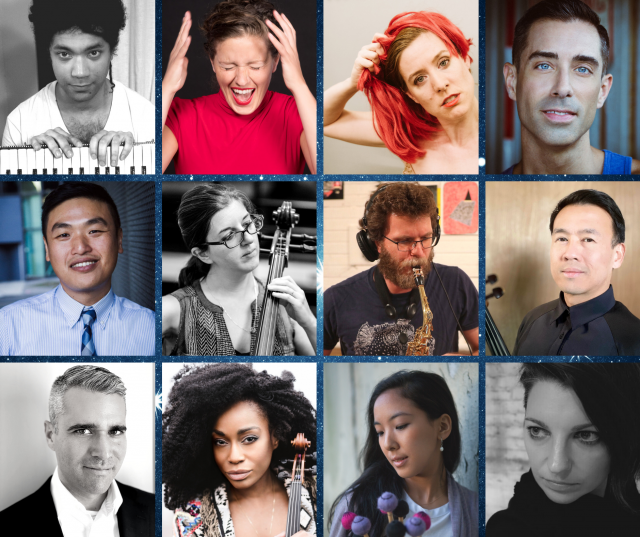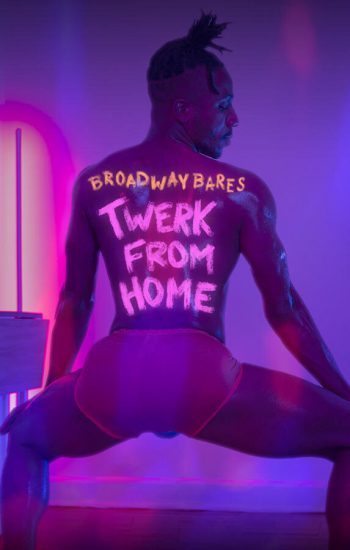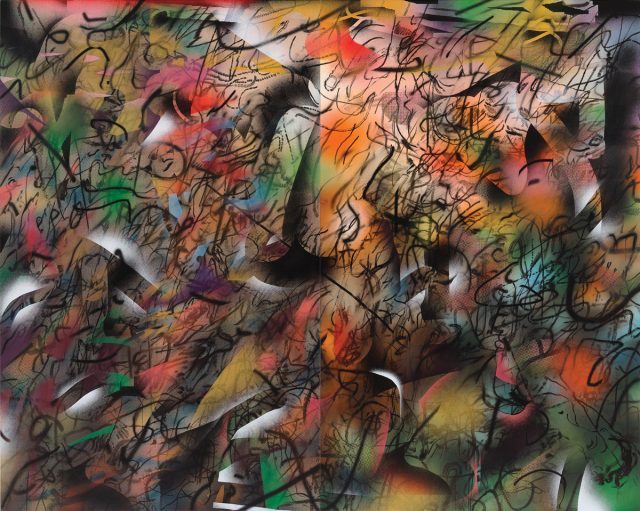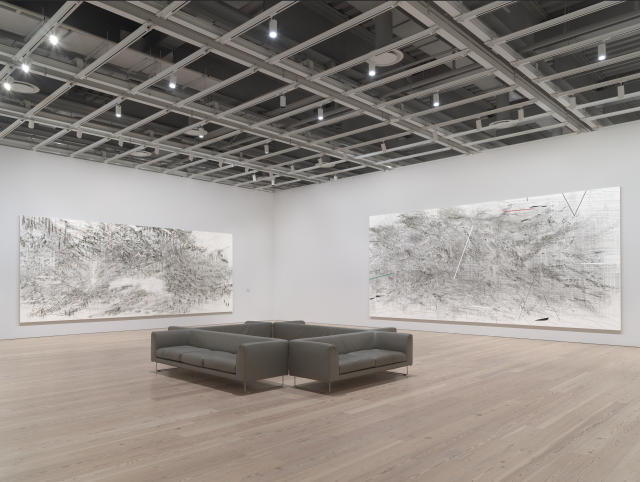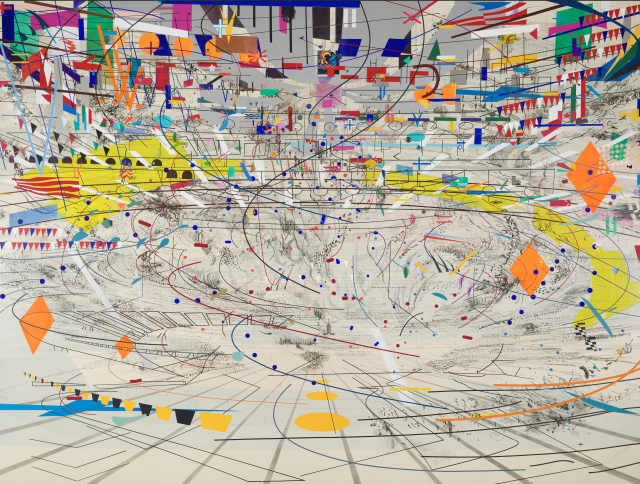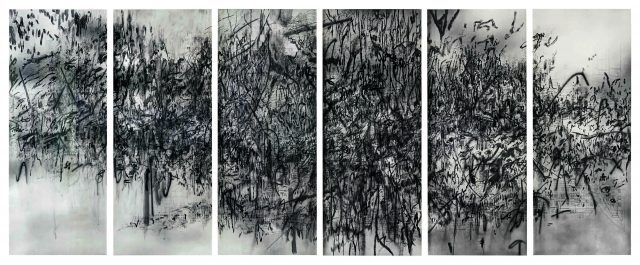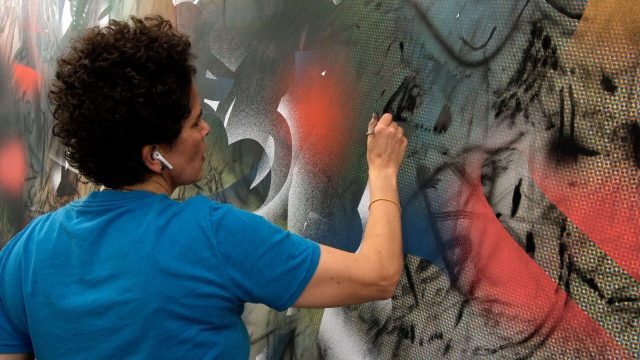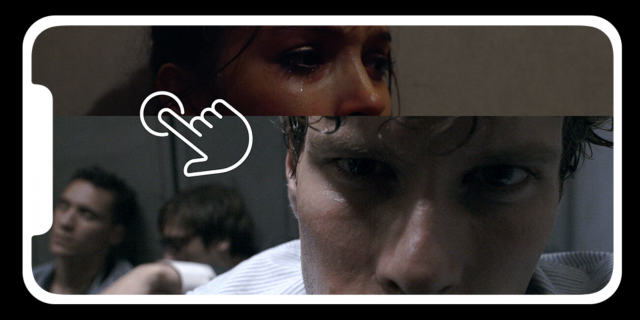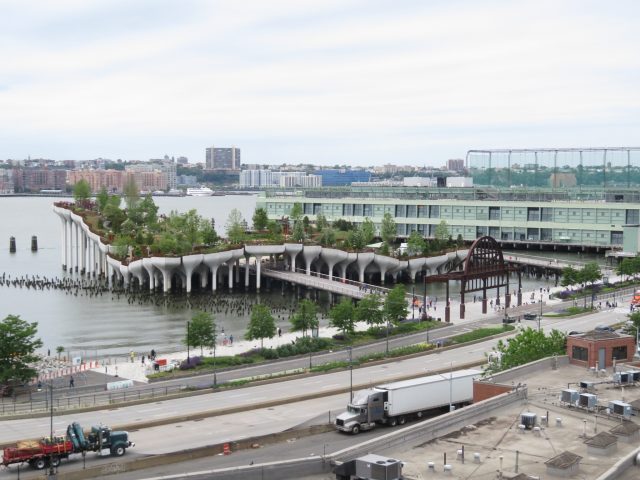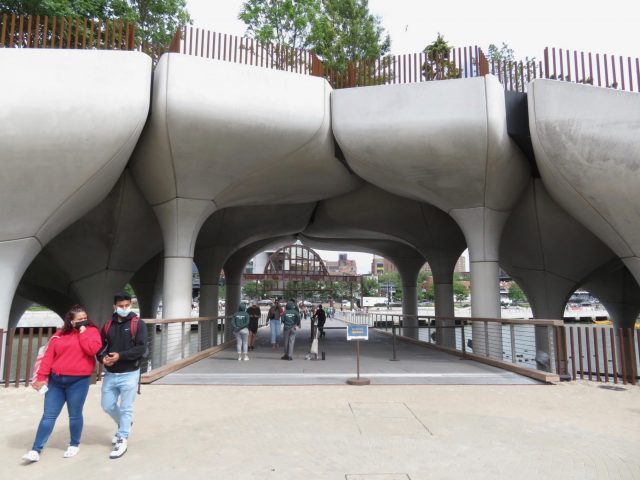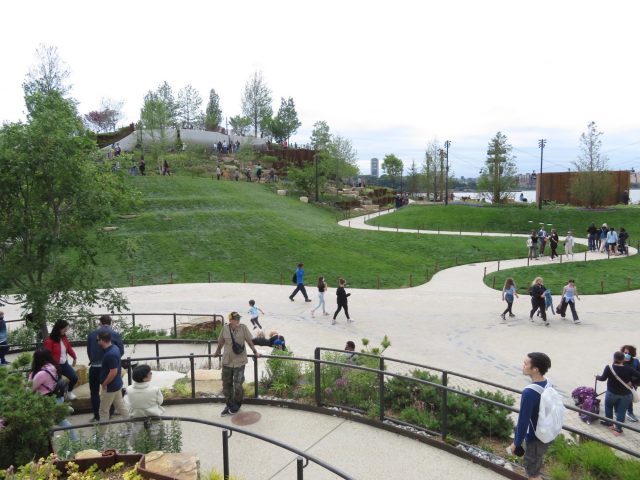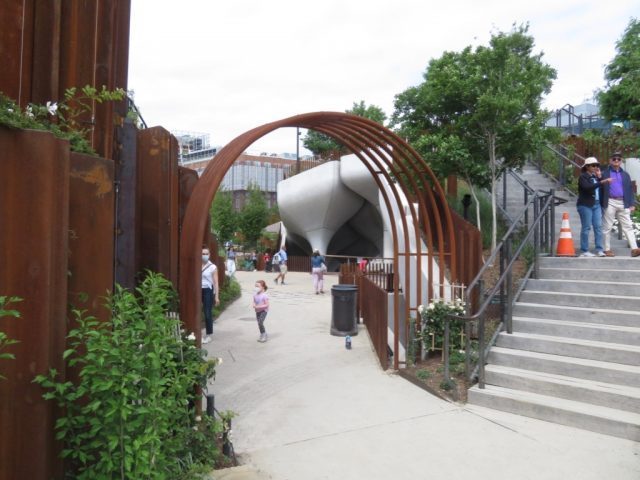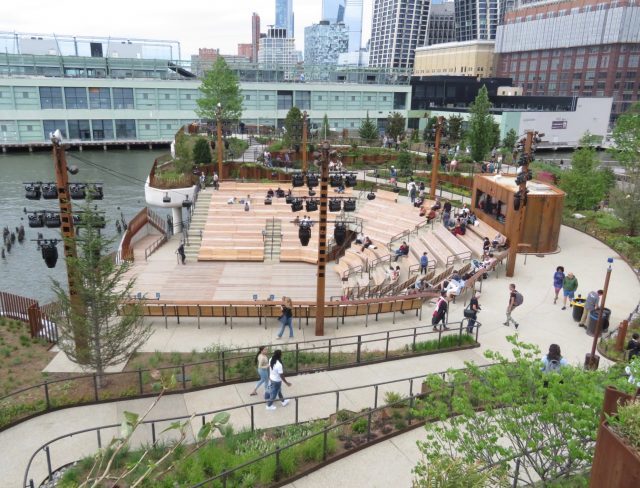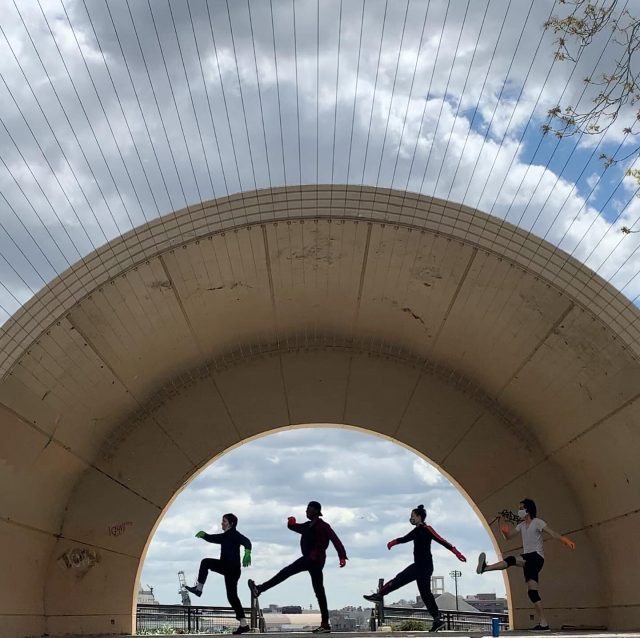
Jody Oberfelder Projects rehearses Amphitheater prior to June 21 live performance (photo courtesy JOP)
Who: Jody Oberfelder Projects, Frank London Ensemble
What: Live site-specific performance
Where: East River Park Amphitheater
When: Monday, June 21, suggested donation $15, 6:30
Why: The continuing effort to save East River Park includes protecting the bandshell-like amphitheater, which has become an important place of creation during the pandemic. On March 15, choreographer Andrea Miller, directors Henry Joost and Ariel Schulman, and New York City Ballet principal dancer Sara Mearns released the five-minute short Another Dance Film, in which Mearns, following a cautious approach, propels herself around the mostly empty amphitheater. Last week, in conjunction with Pride month, choreographer, dancer, and activist Ani Taj of the Dance Cartel posted Sunday, in which Taj arises in the space and cuts loose, with an infectious joy that is enhanced by Daniel Kluger’s galvanizing electronic score.
In an interview, Taj told me, “The amphitheater definitely has a draw for many different artists and communities. It’s a versatile public space that gets shared and repurposed in meaningful ways. I’ve loved seeing how many different ways people have used that space through the pandemic, especially since outdoor spaces have become so treasured during this time — on the day we were shooting alone, we saw folx doing workouts, having meetings, performing outdoor comedy shows, impromptu dance parties. . . . The architecture of the amphitheater definitely drew us, since it has a certain geometric framing that seems to invite movement and a camera — and of course being by water and open air, in a time of such confinement, was appealing. But I think the main draw was that energetically, it’s a space that can hold many different expressive and social dynamics, gatherings — and that’s what we wanted to make contact with and honor in this project. An open-air theater, as a container for everything that we were missing, felt right.”
On June 21 at 6:30, the Manhattan-based company Jody Oberfelder Projects will activate the space, hosting a public gathering with a live performance and an audience amid the summer solstice. Amphitheater is choreographed by Oberfelder, whose site-specific work includes 4Chambers on Governors Island, The Brain Piece at New York Live Arts, Object Place (for Astor Place), and On the Move Shortly in London’s St. Pancras Station. Amphitheater will be performed by Emily Giovine, Jade Manns, Daniel Morimoto, Maya Orchin, and Mark Willis, with an original score composed by Grammy-winning klezmer-jazz bandleader Frank London, featuring London on trumpet, Javier Diaz on percussion, Brian Drye on trombone, and Marcus Rojas on tuba. The event will begin with a land acknowledgement by Bessie Award-winning multidisciplinary artist and Guggenheim Fellow Emily Johnson of the Yup’ik Nation, who has been at the forefront of the fight to save East River Park, and a poem by poet, author, arts journalist, filmmaker, activist, and Guggenheim Fellow Eileen Myles.
The work “challenges the pending demolition of this fifty-acre park that transformed Lower Manhattan more than eighty years ago through inscribing the space with our movement inspired from human connections,” Oberfelder explains in a press release. “We believe it is time to be happy again and reconnect with our community through our common joie de vivre, our passion for dance.” Admission is free, with a suggested donation of $15.
